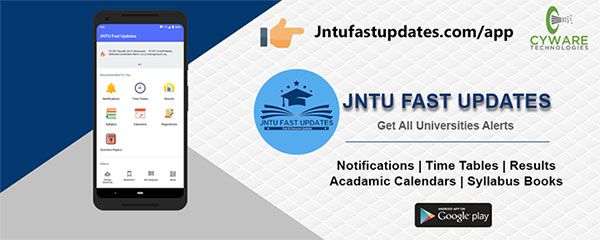JNTUK R16 3-1 OOAD UML Material PDF Download
Students those who are studying JNTUK R16 CSE Branch, Can Download Unit wise R16 3-1 Object Oriented Analysis and Design using UML Material/Notes PDFs below.

JNTUK R16 3-1 OOAD UML Material PDF Download
OBJECTIVES:
- To understand how to solve complex problems
- Analyze and design solutions to problems using object oriented approach
- Study the notations of Unified Modeling Language
UNIT-1
Introduction: The Structure of Complex systems, The Inherent Complexity of Software, Attributes of Complex System, Organized and Disorganized Complexity, Bringing Order to Chaos, Designing Complex Systems, Evolution of Object Model, Foundation of Object Model, Elements of Object Model, Applying the Object Model.
UNIT-2
Classes and Objects: Nature of object, Relationships among objects, Nature of a Class, Relationship among Classes, Interplay of Classes and Objects, Identifying Classes and Objects, Importance of Proper Classification, Identifying Classes and Objects, Key abstractions and Mechanisms.
UNIT-3
Introduction to UML: Why we model, Conceptual model of UML, Architecture, Classes, Relationships, Common Mechanisms, Class diagrams, Object diagrams.
UNIT-4
Basic Behavioral Modeling: Interactions, Interaction diagrams, Use cases, Use case Diagrams, Activity Diagrams.
UNIT-5
Advanced Behavioral Modeling: Events and signals, state machines, processes and Threads, time and space, state chart diagrams.
UNIT-6
Architectural Modeling: Component, Deployment, Component diagrams and Deployment diagrams. Case Study: The Unified Library application.
TEXT BOOKS:
- “Object- Oriented Analysis And Design with Applications”, Grady BOOCH, Robert A. Maksimchuk, Michael W. ENGLE, Bobbi J. Young, Jim Conallen, Kellia Houston, 3rd edition, 2013, PEARSON.
- “The Unified Modeling Language User Guide”, Grady Booch, James Rumbaugh, Ivar Jacobson, 12th Impression, 2012, PEARSON
REFERENCE BOOKS:
- “Object-oriented analysis and design using UML”, Mahesh P. Matha, PHI
- “Head first object-oriented analysis and design”, Brett D. McLaughlin, Gary Pollice, Dave West, O‟Reilly
- “Object-oriented analysis and design with the Unified process”, John W. Satzinger, Robert B. Jackson, Stephen D. Burd, Cengage Learning
- “The Unified modeling language Reference manual”, James Rumbaugh, Ivar Jacobson, Grady Booch, Addison-Wesley
OUTCOMES:
- Ability to find solutions to the complex problems using object oriented approach
- Represent classes, responsibilities and states using UML notation
- Identify classes and responsibilities of the problem domain

320-x100(1).gif)

release Mtech results